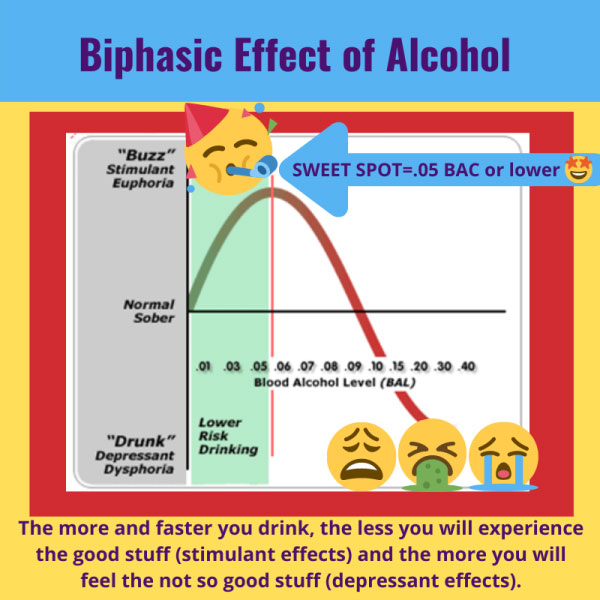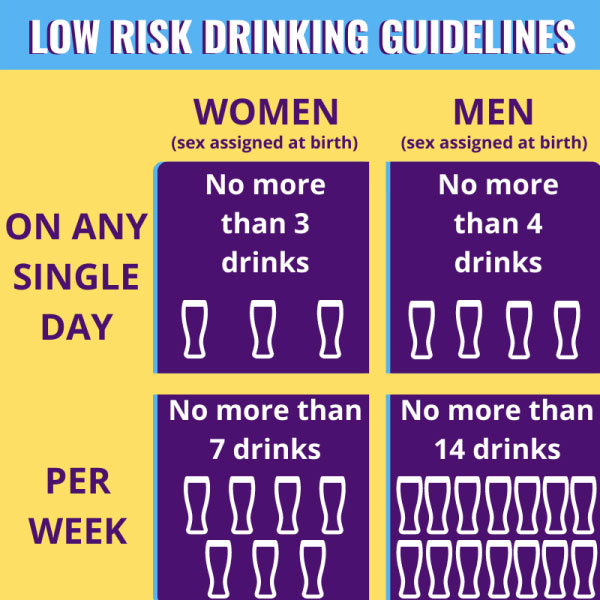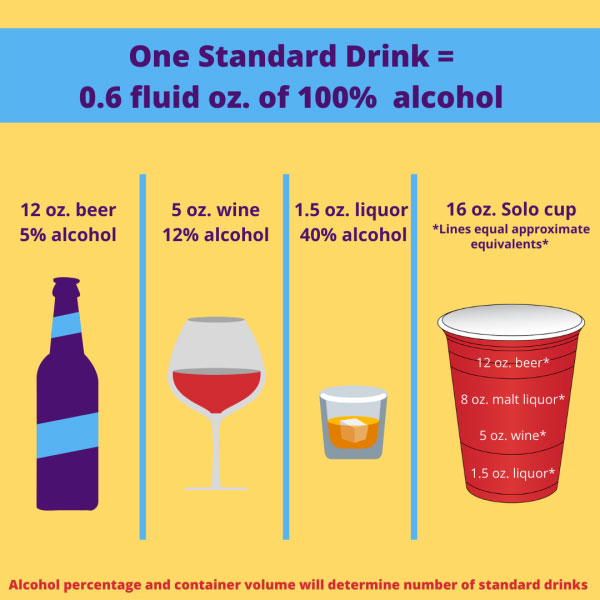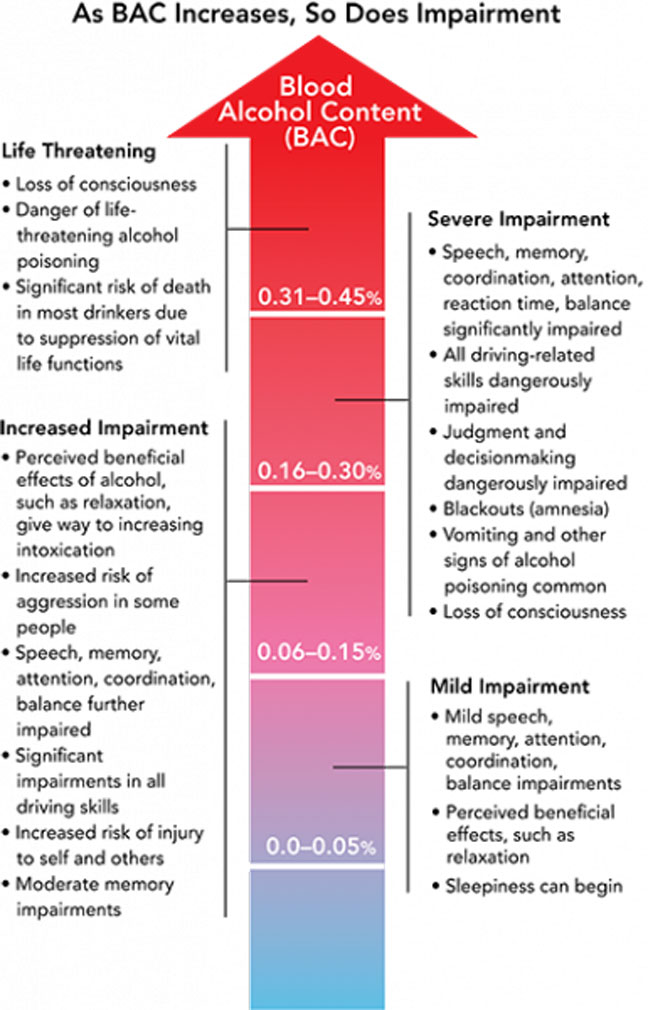About Alcohol
What is alcohol and how does it work?
Ethanol, is an intoxicating ingredient found in liquor, wine and beer. Alcohol is produced by the fermentation of starches, sugars and yeast.
Alcohol is a depressant which means it slows down one's central nervous system. It is quickly absorbed from the stomach and small intestine into the bloodstream. Alcohol is metabolized in the liver by enzymes. The liver can only metabolize a small quantity of alcohol at a time which permits the excess alcohol to circulate throughout the body.
According to the National Institute on Alcohol Abuse and Alcoholism, the immediate effects of alcohol can emerge within approximately 10 minutes. Alcohol's chemical effects decrease inhibitions, inhibit thinking skills and judgment, slow reaction time, and impair motor coordination.
Biphasic Effect of Alcohol
More alcohol may not give you more of what you want. Many college students drink for socialization, but want to avoid unwanted and dangerous effects. When you first start to drink alcohol, you may feel the "buzz" or the pleasant effects of alcohol. The more and faster you drink, the less you will experience the pleasant effects and the more you will feel the depressant effects. A BAC (blood alcohol concentration) of .05 is the point of "diminished returns," or what we like to call the "sweet spot" and drinking more will add negative effects; it is unlikely to intensify the things you find desirable about drinking. If you choose to drink alcohol, but want to minimize your risk of negative consequences, use this online BAC calculator to help you stay in your "sweet spot" (a BAC of .05 or below).


Binge Drinking: a pattern of drinking that brings the blood alcohol concentration (BAC) levels to 0.08 g/dL.
- Men (sex assigned at birth): typically occurs after 5 or more drinks in about 2 hours
- Women (sex assigned at birth): typically occurs after 4 or more drinks in about 2 hours
Drinking Responsibly Can Minimize Health Risks
The following strategies are recommended for legal and responsible alcohol consumption to reduce risk or harm.
If you are drinking too much or you feel that you should stop drinking altogether, the strategies contained in this brochure can help you improve your life and health: Strategies for Cutting Down Your Drinking
In the United States, one standard drink contains 14 grams or 0.6 fluid ounces of pure alcohol.
The following amounts each equal one standard drink. Knowing how much alcohol constitutes a standard drink can assist you in keeping track of your drinks and understanding how much alcohol you are consuming.

Blood Alcohol Concentration
BAC (blood alcohol concentration) represents the percentage of alcohol in your bloodstream. A BAC of .10 means 1 part alcohol for every 1,000 parts blood. As one's BAC rises, so does their impairment.

Factors that Influence How Alcohol is Absorbed
Alcohol affects everyone differently. There are many factors that influence the rate of absorption of alcohol into the bloodstream. These include one's sex, weight, medications, drinking on an empty stomach vs. eating while you drink, and how much and how fast alcohol is consumed. Learn more about the factors that affect how alcohol is absorbed.
Alcohol and Sleep
Alcohol may help one fall asleep more quickly, but it also disrupts the quality of one's sleep and interferes with REM sleep (most restorative type of sleep). It is likely that you will feel groggy and not well rested in the morning.
Alcohol and Sex
Mixing alcohol with sex can be risky. If you and/or your partner are under the influence of alcohol or drugs, it is difficult to make safe sexual health decisions. Partners best intentions to use a condom are often inhibited by using alcohol. They are more likely to be careless when using a condom, causing it to break or slip, or they might have sex without using a condom.
Remember, consent to any sexual activity may never be obtained if one or both partners are mentally incapacitated, including through the use of drugs or alcohol. If you meet someone at a bar/party and they're nice, they'll be nice on Monday. Be an active bystander. Take it upon yourself to intervene if you notice someone who may be in a risky situation, especially when individuals are under the influence of alcohol and/or drugs. Learn more about what constitutes "consent" by reviewing UNI's Discrimination, Harassment, and Sexual Misconduct Policy. If you or someone you know has experienced sexual violence, there are free resources and support available on-and-off campus.
